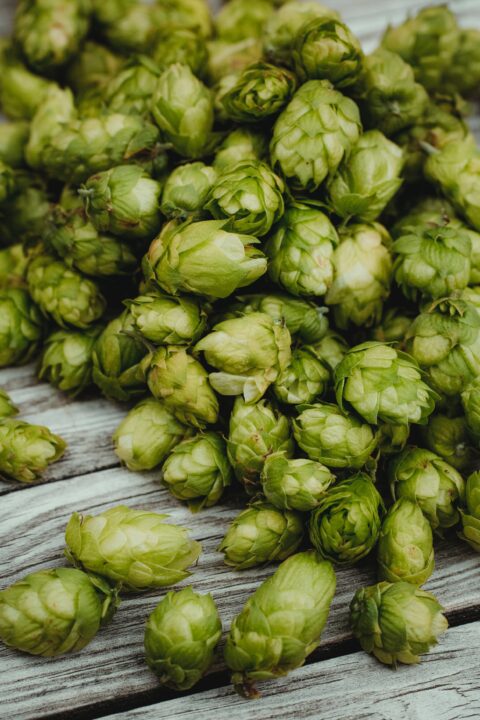Opinion: How Biologicals Are Growing Beyond Crop Protection Purposes
Biofungicides have been growing to become a solution for many orchardists as a trusted part of their disease management protocol. But capabilities beyond just crop protection are starting to find their way to fruition.
A shining star in biofungicides has arguably been Bacillus amyloliquefaciens, a broad-spectrum crop protection tool with commercial applications for many economically significant fruit and nut tree diseases, including fire blight, Alternaria rot, anthracnose, mildews, molds, spots and scabs.
But, did you know B. amyloliquefaciens also has biofertilizer effects on plants — supporting biomass growth of shoots, roots and leaves, enhancing fruit yields, solubilizing potassium and fixing nitrogen in the soil, synthesizing plant growth hormones to trigger plant growth, and enhancing the internal proteins, amino acids, sugars and minerals in a plant?
While most growers as well-versed with biofungicides, the holistic nature and our expanding understanding of biologicals has prompted us to ask the question — what more can biologicals do for fruit and tree nut growers?
While we know disease management is still high up on growers’ priority list, other issues are becoming increasingly important, especially within the context of climate change and increasingly unstable global supply chains. Here are just a few:
Managing Residuals & Meeting Market Demands
When it comes to marketing fruit, it’s all about pesticide residues. And unfortunately, recently fluid and unpredictable maximum residue limits (MRL) from export markets have turned MRLs into a headache for packers.
A January 2022 economic study looking at the trade impact of MRLs on U.S. fresh fruit and vegetable exports to the European Union described the situation as “quite elastic.” Stricter importer MRLs have already reduced bilateral trade by 8.8% and that number may increase to 13.8% if even more stringent policies under review are adopted. Considering U.S. fruit and tree nut exports were more than $3.28 billion in 2020 — and nearly double what they were in 2009 — stricter MRLs could significantly impact fruit and tree nut sales.
This puts many conventional orchardists in a tight spot and facing the potential of taking a significant economic hit. They can’t afford a disease management program without the high efficacy of synthetic chemicals. But those very same products put them at risk of going over MRLs. However, this is where biologicals can provide solutions for conventional growers by combining biological and synthetic products in a pest and disease management regime.
Because biologicals dissipate quickly, they are generally exempted from tolerances. By incorporating biologicals at the tail-end of a disease management regime, orchardists can still meet high-quality parameters for their crop while lowering their exposure to MRL issues.
Weathering Climate Extremes
Weather has always been an issue in agriculture. Still, global warming is increasing the frequency, duration, and intensity of extreme weather events. California’s record-setting drought forced almond producers to rip up orchards. The Pacific Northwest’s extreme heat waves last year cost cherry growers tens of millions in lost crops. In the Northeast, tree fruit growers have struggled with prolonged periods of spring rains followed by summer water deficits since 2019.
We have learned that biofertilizer products significantly improve soil’s ability to absorb and retain moisture. Microorganisms in biofertilizers work to bind soil particles together, forming stable soil aggregates. This has the effect of increasing water infiltration in poorly drained soils or during extreme moisture events. Conversely, those same aggregates slow infiltration on excessively drained soils and retain that moisture for later.
Biofertilizers can give crops better access to moisture when they need it and a quicker way to drain it off when they don’t. Especially when combined with other strategies like more resilient cultivars and precision water management technology, biofertilizers are one more tool to helping orchardists survive weather extremes with their crop and profits intact — and this is true for orchard crops as well.
Managing Nutrient Efficiency and Crop Vigor
With fertilizer prices at record highs, American-made biofertilizers that help growers reduce the amount of synthetic fertilizer needed.
Again, research has shown that using biofertilizers can significantly reduce the quantity of fertilizers farmers need to use by allowing plants to efficiently use the nutrients already in the soil. Biofertilizers increase the solubility of existing nutrients, aid in nitrogen fixation, stimulate root growth, and support other symbiotic relationships between soil microorganisms and plant growth that boost soil fertility and a plant’s ability to utilize that fertility.
Now we are connecting the dots between tree crop phenology and biofertilizer applications. We’re timing the use of biofertilizers to coincide with flush events, enhancing sustainable root growth that can support the vigor of a fruit and tree nut crop throughout the season and into the next.










